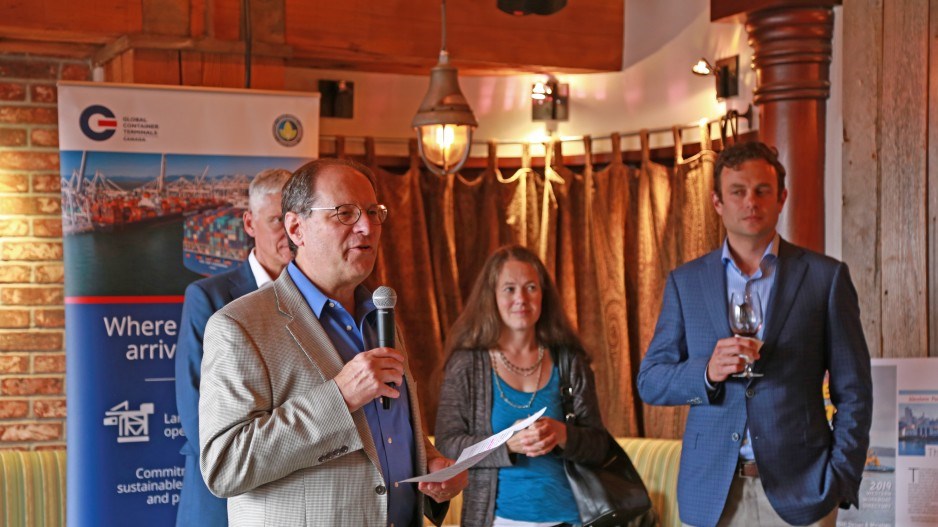Global Container Terminals (GCT), Canada’s largest terminal operator and maritime employer, celebrated a historic milestone July 18: the 50th anniversary of the first arrival of a dedicated deep-sea container ship to Vancouver’s shore.
On July 18, 1969, the M.S. Axel Johnson, a container ship owned by Swedish shipping company AB Nordstjernan, sailed under the Lions Gate Bridge and docked at LaPointe Pier, which is now a small part of GCT’s Vanterm terminal.
To mark the occasion, GCT held a small celebration, showcasing archival photographs of the Axel Johnson as well as a retrospective article published by Western Mariner magazine.
“50 years from now, GCT will still be here. And not only will we be operating Vanterm, and not only will we be operating DeltaPort, but we will be operating a fourth berth in Deltaport,” GCT president and CEO Doron Grosman said during the event.
Grosman’s remark alludes to GCT’s proposal to expand capacity at Deltaport, Vancouver’s largest container terminal, by over 80% at a cost of $1 billion. Under the proposed project, Deltaport would grow by 138 acres and add a fourth berth, increasing its total capacity to 4.4 million 20-foot-equivalent units (TEUs) from the current 2.4 million to meet growing demand.
GCT’s proposal faces resistance from the Vancouver Fraser Port Authority (VFPA), which supports the $2-to-$3-billion Roberts Banks Terminal 2 (RBT2) proposal. RBT2 would instead fill 108 hectares of land into the ocean to build a three-berth terminal, adding 2.4 million TEUs to the total container handling capacity.
The Canadian Environmental Assessment Agency’s review panel completed its public hearing sessions on the RBT2 proposal June 24 and is open to receiving closing remarks from hearing participants until August 26.
Whatever its future in Delta may hold, GCT’s history stretches long into the past, even before the Axel Johnson’s arrival in Vancouver. Its subsidiary, GCT Canada, formerly Terminal Systems Inc., has been operating on the West Coast since 1907. And while the Axel Johnson could only carry 650 TEUs, the largest modern container ships now have total capacities that surpass 20,000 TEUs.




